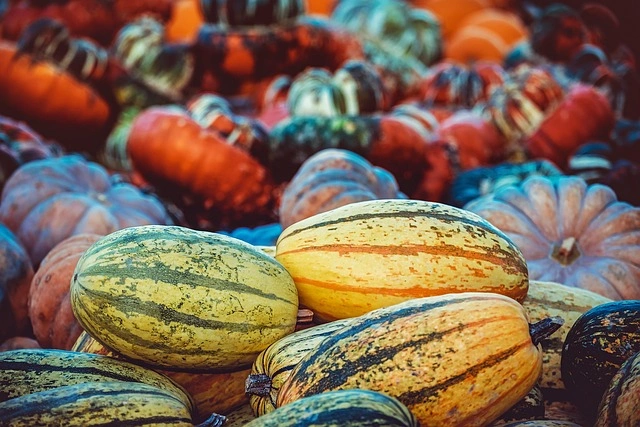As the growing season draws to a close, the approach of harvest marks a critical turning point for farmers. After months of hard work tending to crops, ensuring a successful harvest demands careful planning and proactive measures. In this guide, we outline key strategies—from maintaining equipment to managing labor and post-harvest logistics—that will help you maximize productivity and profitability during the fall harvest.
1. Equipment Maintenance: Your Top Priority
Routine Maintenance and Inspections
Before harvest begins, perform thorough inspections of all farm machinery, including tractors, combines, and other harvesting equipment. Check for signs of wear—worn belts, leaking hoses, or loose bolts—that could lead to unexpected breakdowns. Address these issues promptly to minimize costly downtime.
Servicing and Upgrades
Regular servicing is essential. Change the oil, replace filters, and lubricate moving parts to ensure machines run at peak performance. If your equipment is outdated, consider upgrading to models with advanced features that not only boost efficiency but also help reduce maintenance costs over time.
Spare Parts Inventory
Keep a ready inventory of essential spare parts (belts, hoses, bearings, etc.). Having these on hand enables quick repairs and keeps operations running smoothly during the busy season.
2. Labor Management: Efficient and Safe
Hiring and Training
Assess your labor needs well before the harvest season. Hire experienced workers familiar with agricultural operations, and provide comprehensive training on operating machinery and following safety protocols.
Scheduling and Task Allocation
Develop a detailed schedule and clear task allocation plan to cover every aspect of the harvest. Clear communication and defined roles can prevent confusion and ensure efficiency. Consider using field notes to track progress and adjust as needed.
Safety Protocols
Safety must never be compromised. Provide personal protective equipment (PPE) for all workers, ensure machinery is fitted with proper guards, and hold regular safety meetings to reinforce best practices.
3. Efficient Harvesting Techniques: Maximizing Crop Yield
Crop Monitoring and Timing
Monitor your crops closely to determine the optimal time for harvest. Factors such as soil conditions, moisture content, and weather play crucial roles. Harvesting at the right moment ensures peak quality and maximum yield.
Precision Agriculture
Incorporate precision agriculture techniques—like using GPS-guided machinery, drones, and sensors—to gather real-time data on crop conditions. This technology helps you plan an efficient harvest by ensuring even coverage and reducing overlaps or missed spots.
Harvest Logistics
Plan routes and transportation methods ahead of time to minimize delays. Ensuring that harvested crops reach storage facilities quickly reduces the risk of spoilage and maintains produce quality.
4. Storage and Post-Harvest Handling: Preserving Quality
Storage Preparation
Well before harvest, prepare your storage facilities—silos, grain bins, or cold storage—by cleaning and sanitizing them to prevent contamination. Check for structural issues or pest entry points that might compromise the quality of your stored crops.
Temperature and Humidity Control
Maintaining the correct temperature and humidity is crucial. Invest in monitoring systems that provide real-time alerts, ensuring that conditions remain optimal to prevent mold, spoilage, and insect damage.
Post-Harvest Processing
Depending on your crop, post-harvest processing such as drying, cleaning, or sorting may be necessary. Ensure your processing equipment is in top condition and that you have a plan to handle the workflow efficiently.
5. Contingency Planning: Be Prepared for the Unexpected
Weather Considerations
Autumn weather can be unpredictable. Develop a contingency plan that includes additional labor or alternative storage options in case of sudden adverse weather conditions. Adjust your harvest schedule as needed to mitigate weather-related disruptions.
Backup Equipment
Unexpected machinery failures can jeopardize the entire harvest. Having backup equipment available—whether by renting or borrowing from neighboring farms—can help you avoid major disruptions.
Financial Planning
Harvest season often brings significant expenses—from labor to maintenance and logistics. Prepare a detailed budget and set aside an emergency fund to cover unexpected costs. This proactive approach can help maintain financial stability during peak season.
6. Looking Ahead: Preparing for the Next Planting Season
Crop Rotation and Soil Health
After the harvest, plan your crop rotation to improve soil health and reduce pest and disease risks. Rotating crops not only maintains soil fertility but also optimizes yields for the following season.
Weed Control and Pesticides
Address any weed issues and consider targeted pesticide applications to prepare fields for the next cycle. Effective pest management in the off-season can lead to a healthier start when new crops are planted.
Keeping Appropriate Records
Accurate record-keeping is essential for continuous improvement. Track your harvest operations, note what worked well and what could be improved, and use this data to make informed decisions for the future. FarmRaise offers a suite of on the —check them out today!
Review and Reflect
Once harvest season concludes, take time to review the entire process. Analyze successes, identify challenges, and gather insights that will help refine your approach for the next year. Continuous improvement in equipment maintenance, labor management, harvesting techniques, and contingency planning is key to long-term success.
With careful planning and execution, you can ensure that your harvest season is smooth, efficient, and highly profitable. Tailor these strategies to fit the unique needs of your farm, and set the stage for a prosperous upcoming planting season.
By adopting these comprehensive practices, you not only safeguard your current harvest but also lay a strong foundation for the seasons to come. Happy harvesting!

